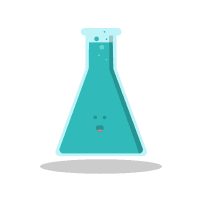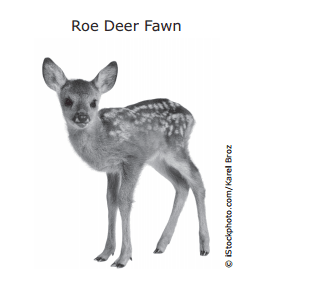
STAAR Biology High School 2015 - Past Paper
Quiz by TEKS Biology High School
High School - Biology
Science (2010) (Archived)
Texas Essential Knowledge and Skills (TEKS)
Feel free to use or edit a copy
includes Teacher and Student dashboards
Measures 35 skills from
Measures 35 skills from
Track each student's skills and progress in your Mastery dashboards
With a free account, teachers can
- edit the questions
- save a copy for later
- start a class game
- automatically assign follow-up activities based on students’ scores
- assign as homework
- share a link with colleagues
- print as a bubble sheet
54 questions
Show answers
- Q1In the European roe deer (Capreolus capreolus), implantation of embryos after breeding is delayed. The deer breed in July or August but do not give birth until the following May or June. From summer to late December, the embryo rests in a state of dormancy as a 30-cell blastocyst. In late December or early January, the embryo sends a signal that causes the female to release hormones, allowing the embryo to continue to develop normally. Why is delayed implantation an advantageous adaptation for the European roe deer?Delayed implantation allows the mother to continue to breed with other malesDelayed implantation enables the female to give birth to more fawns each yearWithout delayed implantation, the fawns would be born in the winter when food is scarce and the weather is harshWithout delayed implantation, the females would not be able to carry a pregnancy to full term45sB.7.E: Adaptation & Diversity
- Q2Parrotfish are herbivores that are found in coral reefs. To escape predation, a parrotfish will graze with a rabbitfish, which has venomous spines at the end of its pelvic fins. The rabbitfish does not benefit from this relationship. Which type of relationship do the parrotfish and the rabbitfish have in the coral-reef environment?Parrotfish are herbivores that are found in coral reefs. To escape predation, a parrotfish will graze with a rabbitfish, which has venomous spines at the end of its pelvic fins. The rabbitfish does not benefit from this relationship. Which type of relationship do the parrotfish and the rabbitfish have in the coral-reef environment?MutualisticPredator–preyParasiticCommensal45sB.12.A: Biological Relationships
- Q3A segment of DNA produces methionine, threonine, histidine, aspartate, and glycine when translated. A substitution mutation occurs and causes the synthesis of the segment as shown. Which is the new peptide chain when the new DNA segment is translated?Methionine, phenylalanine, histidine, aspartate, glycineMethionine, serine, histidine, aspartate, glycineMethionine, leucine, histidine, aspartate, glycineMethionine, proline, histidine, aspartate, glycine30sB.6.E: Changes In DNA
- Q4As ecosystems move through the stages of succession, the populations of organisms in them change. Which of the following describes the stage of succession likely to have the most species diversity?An agricultural field that has not been plowed for one yearA newly formed volcanic islandA temperate forest that has never been cleared by loggingA field that is regularly mowed30sB.11.D: Ecological Succession
- Q5Frogs and toads belong to the order Anura. The smallest organism in this order is about 7 millimeters long, while the largest member is about 30 centimeters long. Which of these lists best describes this order?45sB.8.B: Hierarchical Classification
- Q6On March 24, 1989, an oil tanker ran aground on Bligh Reef in Prince William Sound, Alaska, and spilled millions of liters of crude oil. The graph shows pink salmon populations in Prince William Sound from 1970 to 1999. What do these data suggest about the effect the oil spill had on pink salmon?Pink salmon populations steadily declined in the 10 years following the spillPink salmon populations seemed to be minimally affectedPink salmon populations declined and never fully recoveredPink salmon were nearly eliminated after the oil spill30sB.12.F: Environmental Change
- Q7Cells typically respond to DNA damage in three ways: by ceasing to grow and divide until the damage is repaired, by permanently ceasing to grow and divide, or by dying. In 2010 a group of scientists reported that a certain kind of immune reaction can cause DNA damage that leads to a fourth response. DNA damage can turn off genes involved in cell-signaling pathways. Turning off these genes can cause less-mature cells to divide too rapidly, often leading to the development of —allergieshemophiliacardiovascular diseasetumors30sB.5.D: Diseases
- Q8In recent years humans have interfered with the natural balance within deer populations in various ecosystems. The interference includes eliminating predators of the deer. Which of the following statements correctly describes the long-term outcome of this interference?The deer that are the fastest and most agile will survive and reproduceThe producers will evolve into species that are less palatable to the deerThe deer population will be too large to be supported by producersOther browsing species will thrive and outcompete the deer30sB.12.D: Long-Term Survival
- Q9A student wants to use the Venn diagram below to show the characteristics of two kingdoms of organisms. The characteristics that the two kingdoms share will be listed in the shaded area where the circles intersect. Which of these is a characteristic that the student should list in the shaded part of the diagram?MulticellularHeterotrophicProkaryoticMobile30sB.8.C: Taxonomic Groups
- Q10Part of an important cellular process involving a DNA strand is modeled below. What is the purpose of this cellular process?Deleting the information in the sequence produced from the DNA templateTranscribing information in the DNA sequence for use by the cellProducing more nucleotides for the DNA sequencePreserving genetic information for future generations30sB.6.C: Transcription & Translation
- Q11A student preparing for a hike wants to pack a snack that has biomolecules that provide quickly available energy but few excess calories. Which nutrition label lists the best combination of biomolecules that provide quickly available energy while providing the fewest calories from other types of biomolecules?45sB.9.A: Biomolecules
- Q12Organisms can be classified based on homology, which is shared characteristics inherited from a common ancestor. In the past, homologies were based on studies of anatomical structures and patterns of embryonic development. In more recent years, the use of molecular biology techniques has allowed homologies to be compared at the level of nucleotide sequences. Nucleotide sequence comparisons are possible because all organisms share which of the following?Division of the nuclear chromosomesCellular organellesTypes of proteins needed for cellular functionsDNA bases30sB.6.B: Genetic Code
- Q13An informational pamphlet in a health clinic describes an interaction between body systems. Which statement identifies the body systems that are directly involved in the interaction described and explains how they accomplish the interaction?The nervous system produces hormones that stimulate the ovum, and the circulatory system moves the ovum into the uterine tubeThe reproductive system produces the ovum, and the muscular system causes the migration of the ovum by peristaltic contractionsThe circulatory system supplies the uterine wall with oxygenated blood, and the immune system prevents damage to the ovumThe excretory system expels the ovum from the ovary, and the nervous system causes the contractions of the smooth tissues of the uterine wall30sB.10.A: Animal Systems
- Q14Models of the human immunodeficiency virus (HIV) and an animal cell are shown below. What is the difference in the function of the glycoprotein structures of an HIV virion and the cilia of an animal cell?The glycoprotein structures are used to provide physical support for the viral envelope, and the cilia strengthen the cell membraneThe glycoprotein structures are used to obtain nutrition, and the cilia are used to secrete proteinsThe glycoprotein structures are used for defense, and the cilia are used for locomotionThe glycoprotein structures are used for attachment, and the cilia are used to move fluids surrounding the cell30sB.4.C: Viruses
- Q15Diatoms are one of the most common types of phytoplankton in marine habitats. Like plants, diatoms contain chlorophyll and produce glucose from which of the following?ATP and H2OO2 and ATPCO2 and H2OCO2 and O230sB.9.B: Photosynthesis & Cellular Respiration
